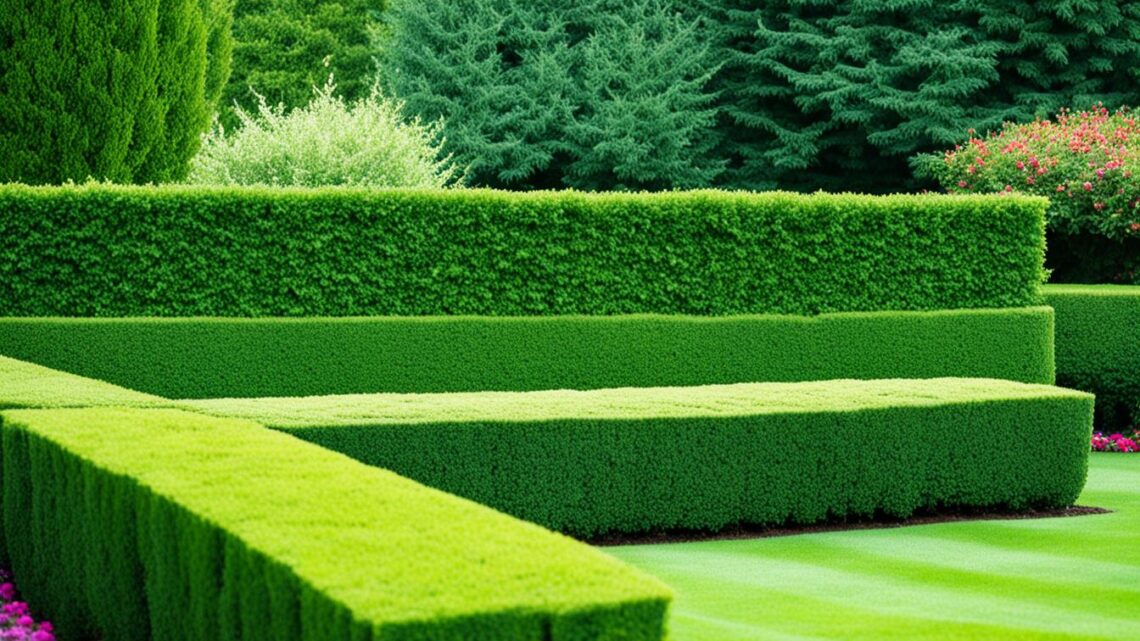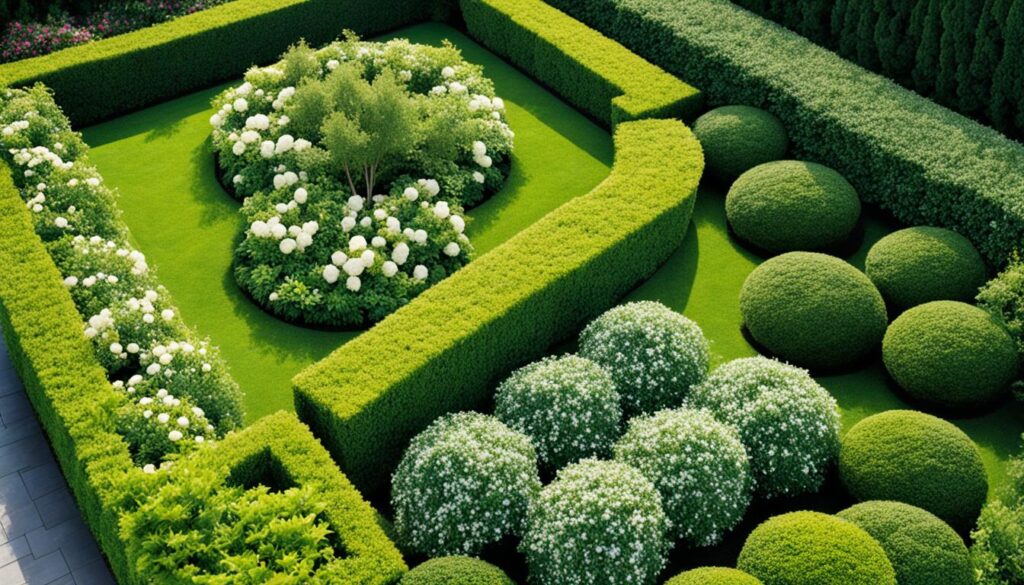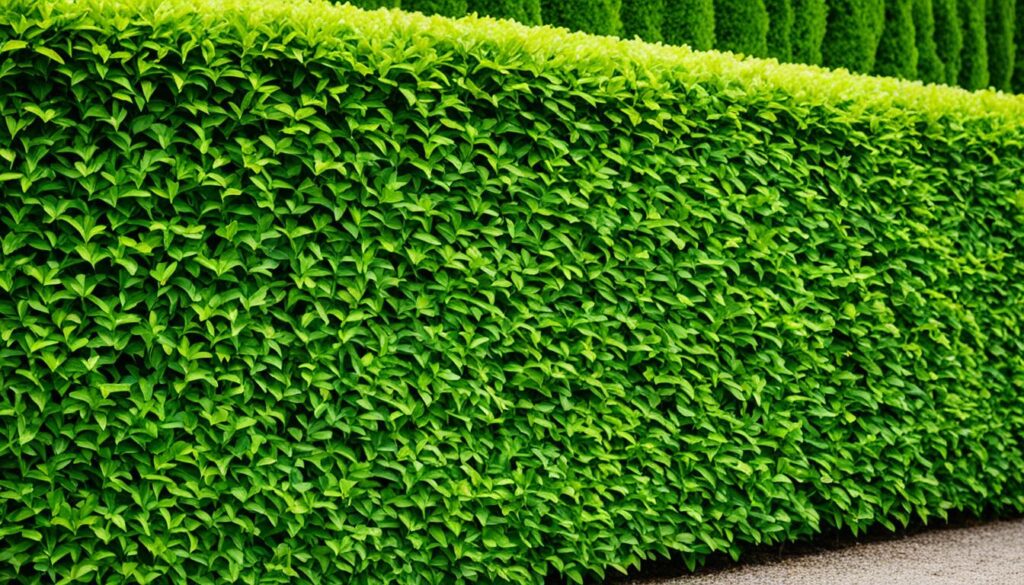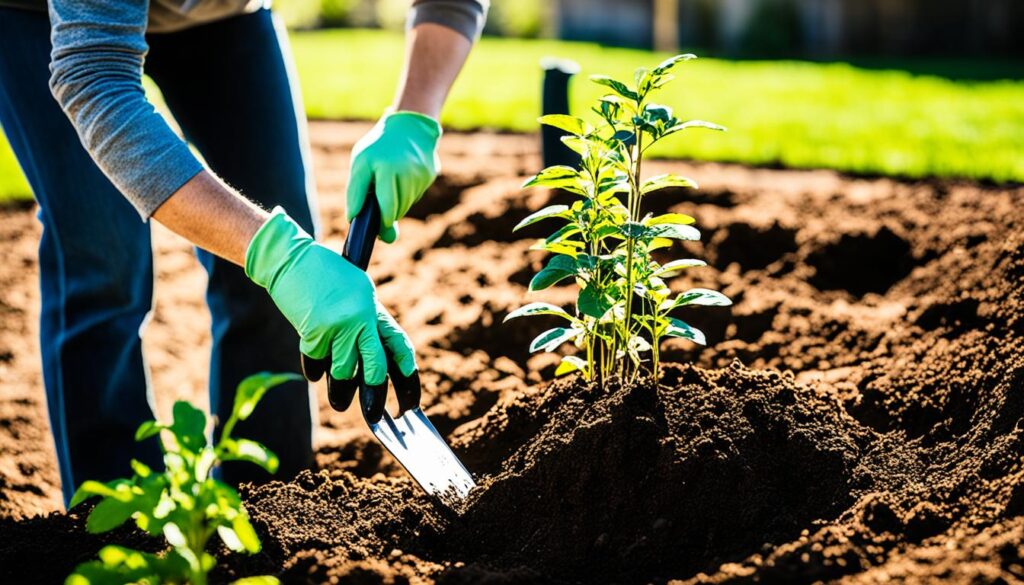
Do you want to turn your outdoor area into a beautiful haven? Hedges might be the perfect choice. But do you really know what they can do? This guide will show you all the great things hedges can achieve in your yard.
They’re not just for marking property lines. Hedges can make your yard look amazing. They help block out noise, increase privacy, and even save energy. Ready to learn more about these green beauties?
Benefits of Installing Hedges in Your Landscape
Hedges can make your outdoor space better in many ways. They offer benefits like privacy, safety, and beauty. Adding hedges to your yard can improve it in several important ways.
Privacy and Seclusion
Hedges create a secluded area in your backyard. They block the view from others, so you can enjoy your space undisturbed. Their thick leaves form a solid screen that keeps your activities private.
Protection from Elements
Not just for privacy, hedges also protect against weather. They act as a barrier against wind, rain, and snow. This natural fence helps shield your home and garden from the worst of the weather.
Noise Reduction
Living by a noisy street? Hedges can help quiet things down. Their dense structure absorbs and reduces noise. This makes your backyard a more peaceful place.
Curb Appeal
Great-looking hedges can really enhance your home’s appearance. They add to its beauty, making it more attractive. With the right hedges, your property becomes more welcoming.
Shade and Cooling
Aside from looking good, hedges can also cool your yard. They provide shade from the sun, saving on cooling costs. This makes your outdoor areas cooler and more enjoyable.
Planning Your Hedge Layout
When you design your landscape, your hedge layout is key. It helps achieve your look and serves a purpose. Think about how far apart your hedges are and what types you choose. This planning makes your outdoor area look great and work well together.
Spacing and Design Considerations
It’s important to space your hedge plants just right. Consider how big the plants will get and how tall you want the hedge to be. Give them enough space to grow and fill out properly. This ensures your hedge layout is a success.
Types of Hedge Designs
The design of your hedges matters a lot. It affects your whole landscape design. Formal hedges with neat shapes add elegance. Informal hedges give a relaxed, natural look. Pick what fits your space and style best.
If you want something really unique, consider mazes or labyrinths in your landscape. They offer fun and adventure for you and your guests. Not only do they look interesting, but they also add a fun touch to your garden.

Choosing the Right Hedge Plants
Selecting the right plants for a hedge is key for it to be thriving yet low-maintenance. It’s important that these plants fit well with your garden’s design. They should also be strong enough to fight off pests and diseases. Focus on low-maintenance, pest and disease resistance, and native and non-invasive species to set your hedge up for long-term success.
Low-Maintenance Options
Opt for hedge plants that are easy to care for, like certain evergreen and deciduous shrubs. Examples are boxwood and juniper for evergreens and spirea and viburnum for deciduous options. Going for low-maintenance plants means less work trimming and watering. This lets you enjoy a beautiful garden without much effort.
Pest and Disease Resistance
Choose hedge plants that fight off pests and diseases well. This choice can save you from a lot of trouble and keep your plants healthy. Check with local nurseries and experts for advice. They can help you pick the right pest and disease resistant plants for your area. This step is essential for your hedge’s long-term well-being.
Native and Non-Invasive Species
Using native and non-invasive species for your hedge is beneficial in many ways. Native plants are already used to your area’s conditions, making them easier to grow. They also need less care and are usually not invasive, keeping your garden’s balance. By opting for native and non-invasive plants, you support a sustainable hedge. This kind of hedge works well with the ecosystem of your area.

| Hedge Plant Type | Low-Maintenance | Pest and Disease Resistance | Native and Non-Invasive |
|---|---|---|---|
| Boxwood | ✓ | ✓ | Varies by species |
| Juniper | ✓ | ✓ | ✓ |
| Spirea | ✓ | ✓ | ✓ |
| Viburnum | ✓ | Varies by species | ✓ |
Hedges
The world of hedges is rich with choices to make your yard better. You can find evergreen, deciduous, and flowering hedges. Each kind has its own beauty and use for your outdoor area.
Evergreen Hedges
Evergreen hedges are full of green all year, making a consistent wall of privacy. Plants like boxwood and holly stay green and full, no matter the season. They’re great for borders and making your space look polished and secure.
Deciduous Hedges
Deciduous hedges lose their leaves, but that’s beautiful too. They might be made from privet or hawthorn. In fall, they could turn bright colors or stand out against the snow in winter. This change makes them interesting all year long.
Flowering Hedges
To add scent and color, try flowering hedges. Hedges with lilac or spirea mix the usefulness of a hedge with pretty flowers. They create a colorful and fragrant space that welcomes all who come near.

Choosing the right hedge can boost the look, privacy, and use of your yard. Know what each kind offers to pick the best one for your style and needs.
Planting and Establishing Hedges
Planting your hedge right from the start is key to its success. You need to set up the site well by fixing the soil and getting rid of weeds. This makes sure your plants will grow strong. And knowing the best way to plant them, like how far apart they should be and how deep to put them, is really important for the hedge to do well.
Site Preparation
Getting the site ready before you plant is crucial. This means making the soil better and taking out weeds to help your hedge plants thrive. With no competition, they can grow well.
Planting Techniques
For your hedge plants, make sure to space them, plant them deep enough, and put them in the ground the right way. The right spacing and depth are so they have room and soil to grow their best. Planting them in a pattern that’s not straight in line can also make the hedge look and grow better.
Watering and Mulching
Keeping a good watering schedule and adding mulch help your hedge stay healthy. Water your plants regularly, especially in the first few years, to help their roots grow deep and strong. Mulch keeps moisture in the soil, stops weeds, and protects the roots.

Hedge Maintenance
Maintaining your hedges is key to a beautiful yard. Keep them healthy and good-looking by trimming, feeding, and looking after the soil. It also helps to keep an eye out for bugs and diseases.
Pruning and Shaping
Cutting and shaping your hedges right is important. Doing this makes sure they stay the size and shape you want. It’s important to know when to prune to keep them looking their best.
Fertilization and Soil Care
Feeding and keeping the soil healthy is vital for your hedges. They need the right nutrients to stay strong and lush. Don’t forget to test the soil to see what it needs more of.
Pest and Disease Management
Being on the lookout for pests and diseases is very important. Check your hedges often and deal with any problems you find quickly. Using natural methods to control pests can keep your hedges healthy.
By taking care of your hedges, you’re making your landscape more beautiful. They will stay vibrant and appealing for a long time.
Four-Season Interest with Hedges
Hedges offer beauty every season in your garden. Evergreen hedges stay green all year. Plants like juniper and arborvitae create lush, green barriers. This gives a beautiful and constant view.
Evergreen Hedges for Year-Round Color
During winter, when most plants are asleep, evergreen hedges shine. Their rich green leaves keep your garden pretty even in chilly months. They act as a solid background for your garden, making everything else look better.
Deciduous Hedges for Seasonal Interest
Deciduous hedges change with the seasons. These are plants that lose their leaves. They bring lively colors in spring and fall, and they stay green in summer. Even in winter, they hold an interesting shape. This makes your garden always look different and engaging.
Using both evergreen and deciduous hedges in your garden is best. This mix gives your outdoor areas variety and beauty all year. Your landscape will keep looking interesting through every season.
Privacy Hedge Alternatives
Privacy hedges are a top pick for making your space private. But there are other good choices too. Fences and trellises give instant seclusion. Louver fences and lattice fences add style to your outdoor area.
Fences and Trellises
Want a more definite way to keep your area private? Fences and trellises are perfect. They quickly block the view, keeping your space hidden. You can pick fences in different materials to match your look, like wood or metal. Trellises add plants for a natural touch to your privacy.
Louver Fences
Louver fences are different with their angled slats. They let air through and offer some view, but still keep things private. You can get them in wood or other materials. Plus, you can set them up to fit in with your space’s style.
Lattice Fences
Lattice fences are both pretty and effective for privacy. They have a grid pattern for plants to grow on. This lets nature in while keeping your space away from view. Lattice fences work well where you still want to see beyond them.
Landscape Design with Hedges
Hedges can make your outdoor spaces look better and work better. You can use them in many ways, from formal areas to casual borders. This makes a big difference in how your place feels and looks.
Formal Hedge Gardens
Formal hedge gardens look very neat and classy. They have hedges that are cut very precisely and into straight lines. These areas can make parts of your yard stand out or create clear boundaries.
Informal Hedge Borders
Informal hedge borders, on the other hand, look more relaxed and natural. They blend the edges of your property with softer, natural shapes. This adds a cozy, welcoming feel to your yard.
Hedge Mazes and Labyrinths
Hedge mazes and labyrinths are for adding some fun and mystery to your outdoor space. They’re not just visually interesting but also interactive. These unique designs can be shaped in many ways to fit your garden.
Eco-Friendly Hedge Maintenance
Maintaining hedges the eco-friendly way is good for the earth and your garden’s health. Use pest control that’s organic and try water conservation methods. This ensures your garden follows green principles.
Organic Pest Control
Dealing with pests organically is vital for green hedge care. Stay away from chemical pesticides that can hurt the environment. Instead, use natural repellents and welcome good bugs. Adding plants that attract helpful insects, like ladybugs, can keep pests in check without man-made poisons.
Water Conservation Techniques
Conserving water is essential in caring for hedges. Use drip irrigation and mulch that keeps moisture in, so you won’t need as much water. This is good for the planet and your wallet, saving on water bills.
Focus on eco-friendly maintenance, and your hedges will be healthy and beautiful. These methods protect the environment and keep your garden looking great. It’s a win-win for the planet and your outdoor space.
Hiring a Professional Landscaper
Feeling overwhelmed by the thought of managing your hedges? Think about hiring a professional landscaper. They understand which plants work best and how to design your yard. They also make sure your hedges stay healthy over time. This leaves you free to enjoy your yard without all the hard work.
A professional landscaper brings their knowledge to your yard. They know the best plants for your area and how to keep them looking great. With their help, you can have a yard that’s both beautiful and easy to care for.
Working with a professional landscaper means you can just sit back and relax in your beautiful yard. They take care of all the planning and work. This way, you can reach your dream yard without any of the usual stress.



